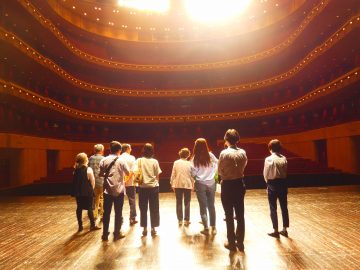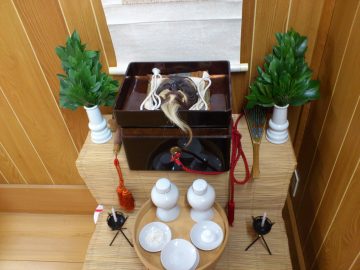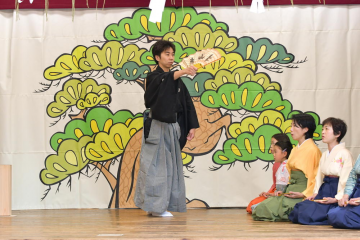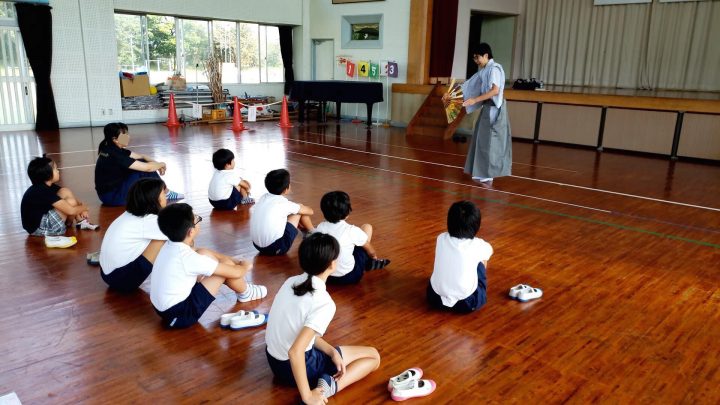<Rediscover the charm of Japan!> Let's go see traditional performing arts (Part 2)

Recommended traditional performing arts for autumn 3
[9/24] The Yokohama Red Brick Warehouse stage is lit up in a fantastical way!
A completely new "modern Noh stage" - "Red Brick Takigi Noh"
A mysterious world unfolds against the backdrop of the night view and illuminations of Yokohama Port.
Noriaki Umewaka, a talented performer of the Kanze school, will perform the Noh play "Funabenkei," while Akira Yamaguchi, a painter also known as the "Heisei Yamato-e artist," will paint the "kagami-ita" (mirror panel) that is indispensable to the Noh stage. The space will be encased in a fantastical world by the lights of world-renowned lighting designer Akari Ishii-Lisa. Just imagining this stage will get your heart racing with excitement!
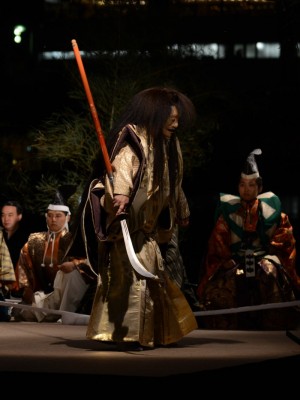
A stage with a synopsis and rare seats that even beginners can enjoy
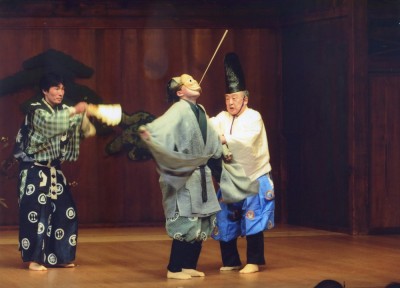
The program is
Noh ``Funabenkei Chūjigo no Kae'' (Kanze School) Noriaki Umewaka
Kyogen "Mosquito Sumo" (Okura School) by Norishige Yamamoto
Both pieces are enjoyable even for novices, but this time, a synopsis will be provided in both Japanese and English and made available for viewing on tablets and smartphones. It looks like even people who aren't normally familiar with Noh will be able to enjoy themselves even if they drop in without any prior knowledge. There is also a wide range of prices, so even those who just want to see a little bit can afford it. (Plus, the unreserved seats are rare seats that allow you to see from angles that aren't normally seen on a Noh stage!)
I went to the production presentation!
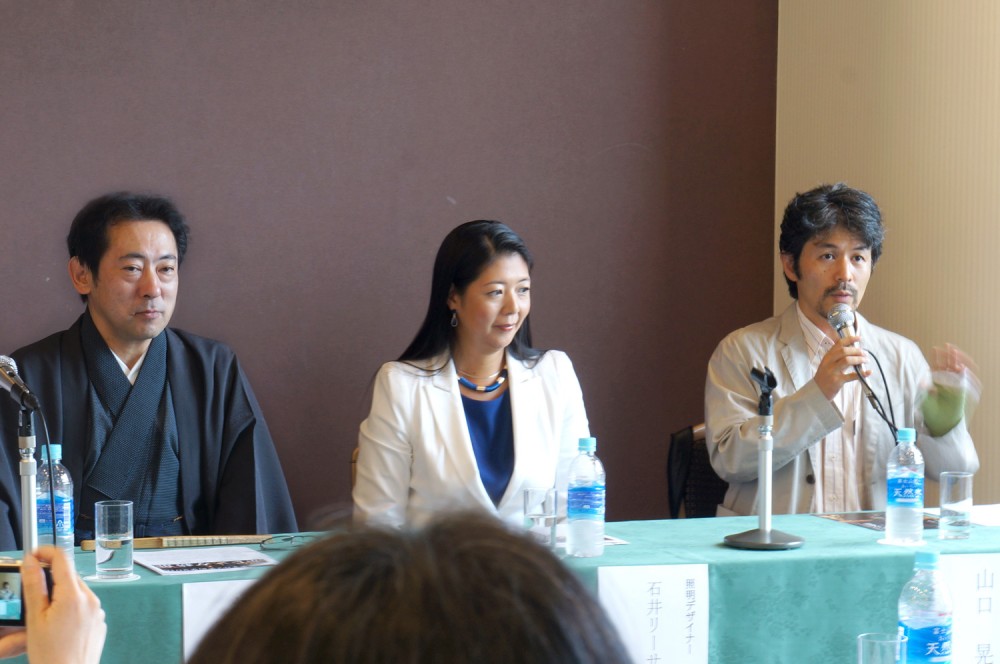
At the production presentation held the other day, Noriaki Umewaka, Akari Ishii-Lisa, and Akira Yamaguchi attended. General producer Masayuki Nakamura, director of the Yokohama Noh Theatre, explained the outline of the project and spoke passionately, saying, "We want to create a world that is completely different from any previous Takigi Noh performances!"
Although they are in different genres - Noh, lighting, and art - they are all top runners in their fields. Their comments were full of individuality, and greatly raised expectations for the performance.

This year marks the 20th anniversary of the Yokohama Noh Theater's opening, but this will be the first time the Noh stage will be held at the Yokohama Red Brick Warehouse. On an autumn night, Noh dances take place in the light of the beautiful moon and the night view of Yokohama Port spreading out in the background. When you imagine the scenery surrounded by artistic lighting and the Heisei Yamato-e pine trees floating in the background, you can't help but feel the greatness and depth of Japanese culture. Let's pray now for a beautiful moonlit night and a pleasant night breeze!
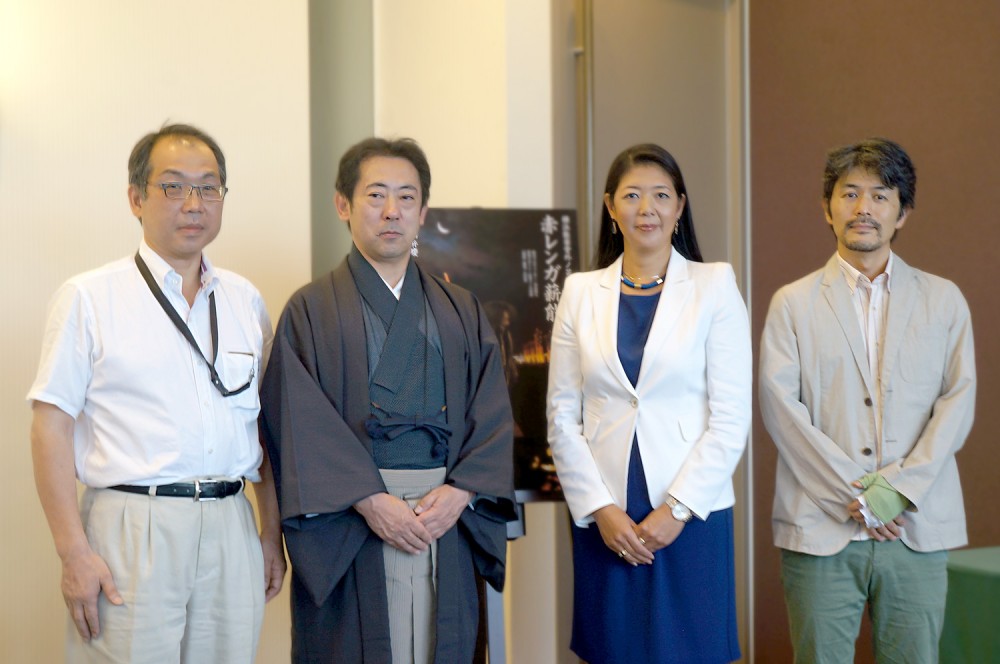
I went to see the public production of Akira Yamaguchi's "Kagamizaka"!
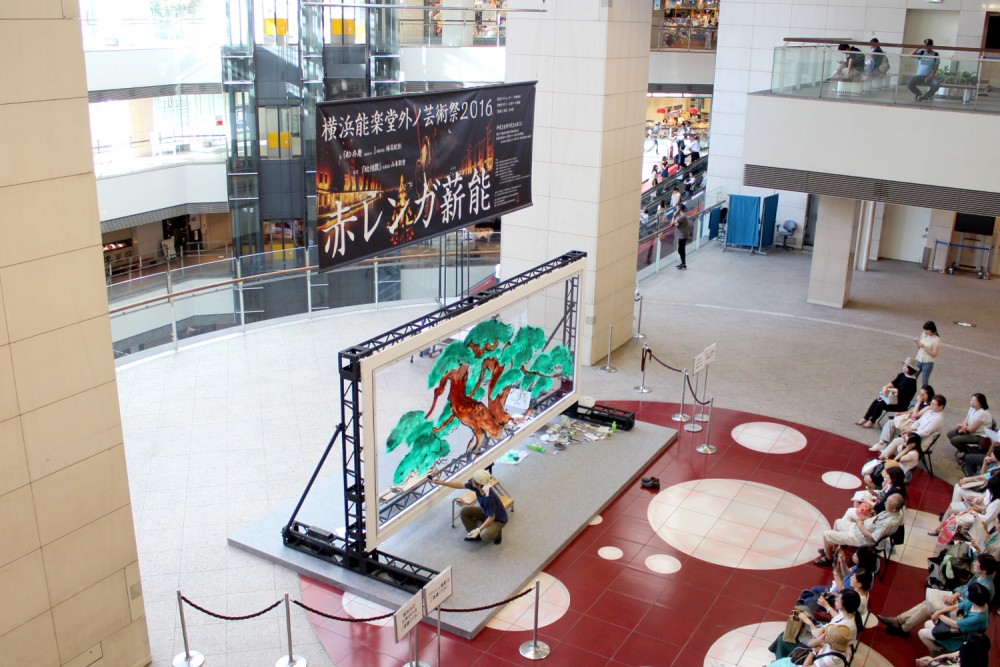
Prior to the "Red Brick Takigi Noh" performance, artist Akira Yamaguchi held a public production of the mirror panels on August 26th. Located in Queens Square near Minatomirai Station, people passing by on their way to work or for shopping stopped to look at the pine painting as it was being completed.
In order to preserve the sense of depth that is characteristic of the location, and to allow the viewer to see the Bay Bridge and the night view, the Akarenga Takigi Noh stage panels are transparent. Taking advantage of the glossy material, the stage panels are painted with oil paints. This is the first attempt in the history of Noh.
Apart from the breaks in between, Yamaguchi-san worked almost without a break. When we interviewed him midway through the process, he told us the following:

"The panel of a Noh stage is merely the background, and the Noh performer is the main character. Faithful to the example of my predecessors, I was conscious of using pine trees that would accentuate the performers and expand the stage when someone stands in front of it. I would like to bring my own innovative touch to this.
Because the material is transparent, the real space behind the pine tree is projected. It would be nice to be able to create a pseudo-space that exists between reality and dreams."
■Date and time: Saturday, September 24, 2016
■ Venue: Yokohama Red Brick Warehouse Event Square Special Stage
■Price: Special seats (reserved seats, S seats in the Noh Theater in case of rain): 7,000 yen
First class seats (reserved seats, A and B seats in the Noh Theater in case of rain): 6,000 yen
Second class seat (reserved seat, refund in case of rain): 4,000 yen
Unreserved seating (refund in case of rain): 2,000 yen
*Only premium and first class seats are available at Yokohama Noh Theatre.
■Tickets: Premium and first class seats are sold out.
*Second class and unreserved seats are available at Ticket Pia
Recommended traditional performing arts for autumn 4
[10/9] Annual performance in Yokohama!
The trinity of composite arts: Bunraku puppet theatre, a UNESCO intangible cultural heritage
I was fascinated by the subtle movements that even expressed emotions.
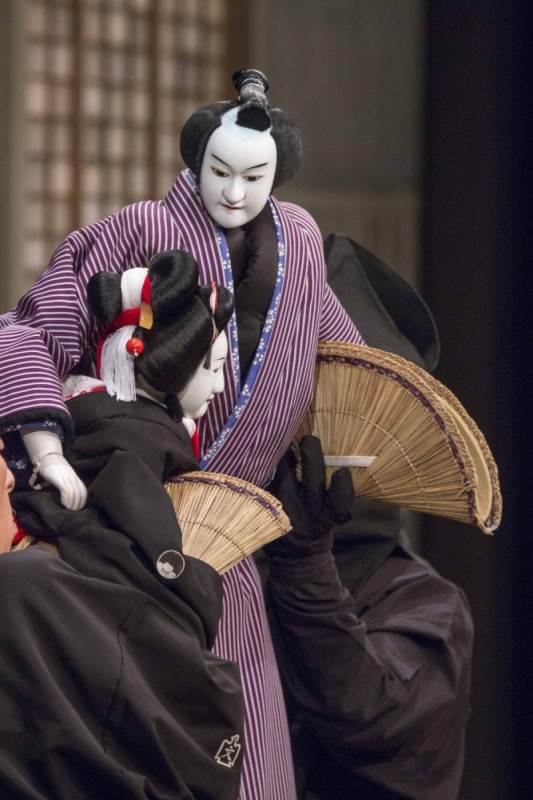
The Kanagawa Prefectural Youth Center, located on top of a small hill with a good view of the Yokohama Landmark Tower, hosts the Bunraku puppet theater every October.
This performance is extremely popular every year as it is a rare opportunity to see a Bunraku performance, which originated in Osaka, in Kanagawa Prefecture.
Many people have heard of Bunraku puppet theatre, but not many have actually seen it. The narrator's narration, the sound of the shamisen, and the puppets. These three come together on stage to create a complex drama, making it a traditional performing art that represents Japan and is registered as a UNESCO Intangible Cultural Heritage. Each puppet is controlled by three puppeteers. One of the highlights of the puppets is their subtle movements, which are unique in the world and can even express emotions, capturing the hearts of many fans who say, "They're just like real people!"
Comes with subtitles so even beginners can enjoy the show with ease!
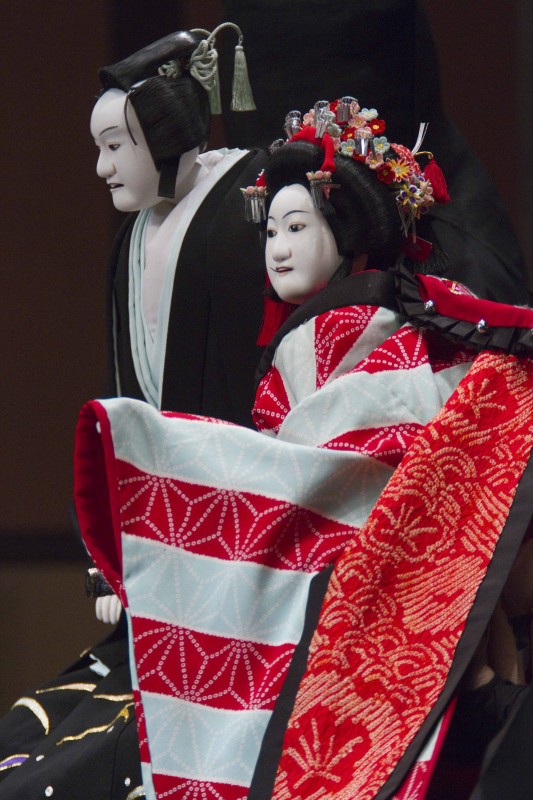
The performances at this youth center are highly praised for their easy-to-understand direction, including the performers explaining the plot and the use of subtitles, making them easy for even beginners to understand.
People who saw it last time said, "The subtitles were very easy to read. The explanation at the beginning helped me understand the flow of the story, which was great." "It was my first time, so I was worried whether I would be able to understand the content of Bunraku, but I was moved by the detailed facial expressions of the narrator and the movements of the puppets." "Perhaps because it was a small hall, the sound and the stage were both close, which was great. I'd love to see you again next year. Thank you."
It looks like it will be a performance that can be enjoyed by both first-time viewers and Bunraku fans.
On the day, different performances will be held in the day and evening.
Imoseyama Onna Teikin (The Teachings of the Lady of the Mountains) - The Sugi Sake Shop, The Journey of Love and Hem Ring, The Princess Returns, and The Golden Palace
...A grand story based on the Taika Reforms, skillfully interweaving fact and fiction.
[Evening Session]
Recent Riverside Tatehiki (The Shijo Riverside Scene, the Horikawa Monkey Walk Scene)
...A compassionate story about a mother, siblings, and children set in a poor monkey show home in Kyoto.
There are only a few tickets left for the daytime performance, but there are still some seats available for the evening performance. The evening performance, "Konkoro Kawara no Tatsubin," is a tragic yet humorous human interest story that intertwines humor and melancholy. Why not come and experience the world of the puppet stage on an autumn evening?
■Date and time: Sunday, October 9, 2016
Daytime performance starts at 13:00 (doors open at 12:30)
Evening performance starts at 17:00 (doors open at 16:30)
■ Venue: Prefectural Youth Center Hall
■Price: General A seats 3,200 yen / B seats 2,500 yen / C seats 1,500 yen
Wheelchair seat: 2,500 yen Companion seat: 2,500 yen
Students: 1,000 yen
■Tickets: Kanagawa Ticket 0570-015-415 (reception 10:00-18:00)
(Tickets are also available at the Kanagawa Prefectural Music Hall, Kanagawa Prefectural Hall, and KAAT Kanagawa Arts Theatre.)
